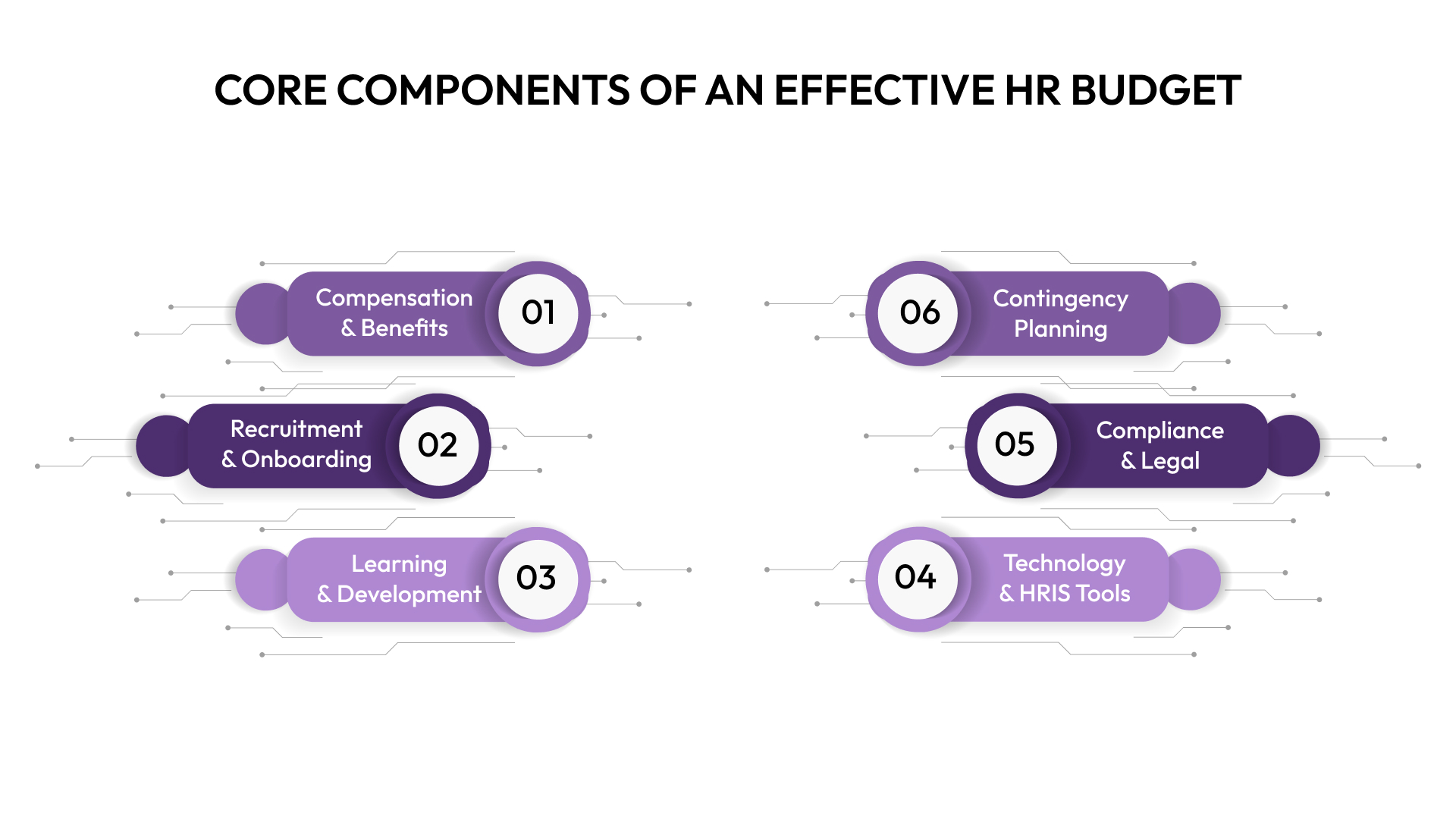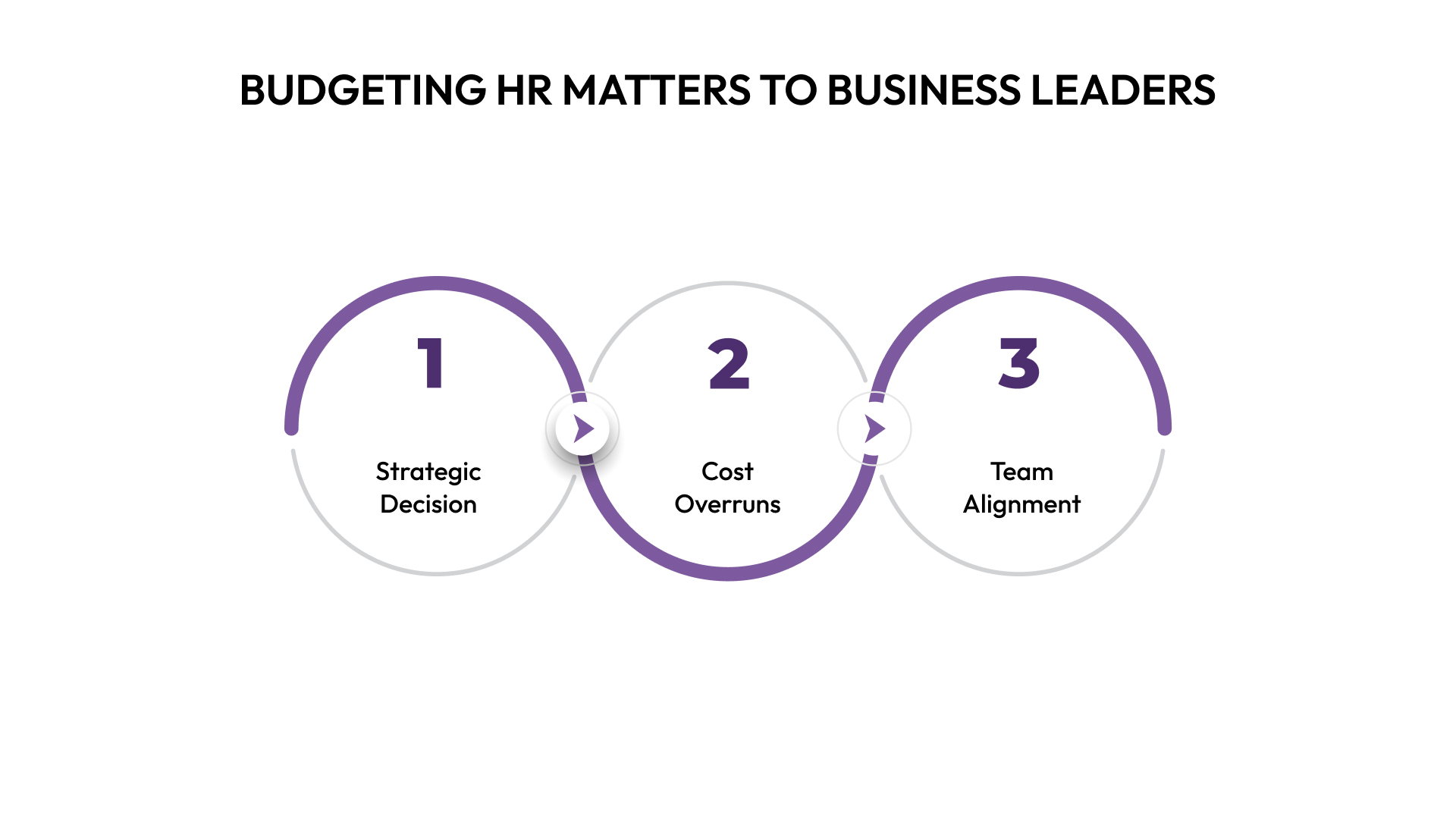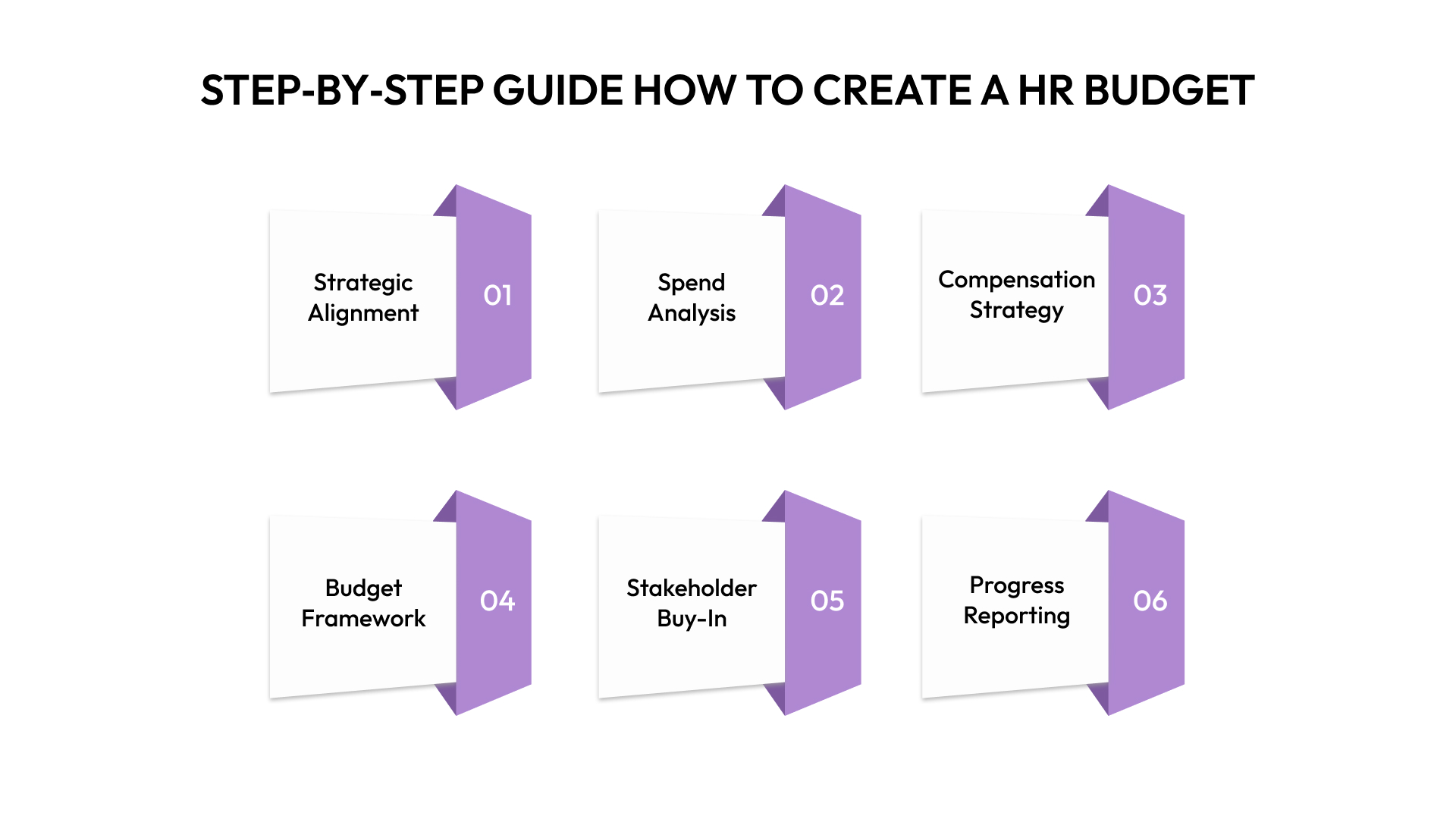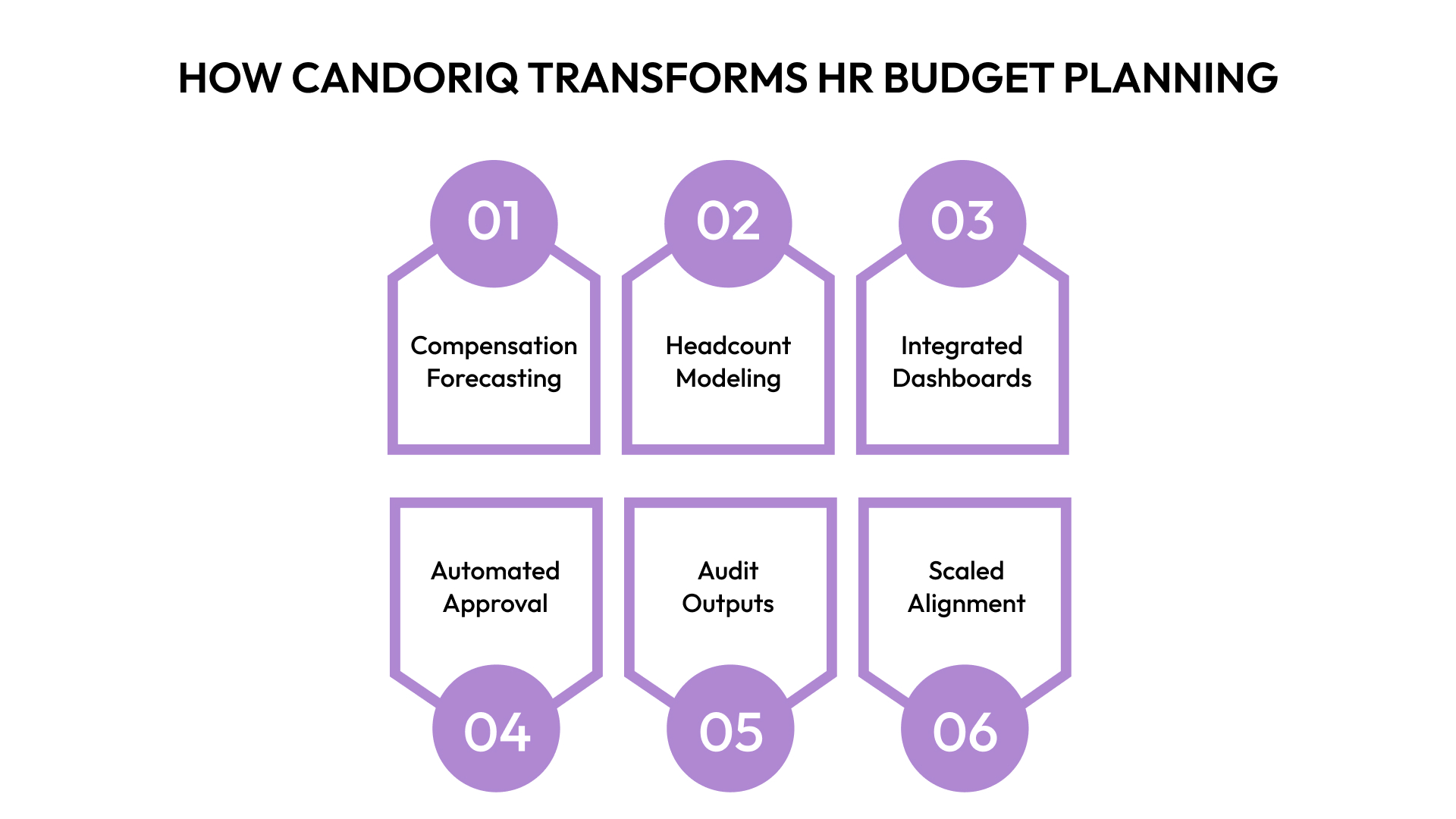How to Develop an Effective Human Resources Budget Plan
Align your human resources budget with strategic goals. Plan for compensation, recruitment, and training costs. Click to optimize HR spends.
%20Large.jpeg)
A human resources budget outlines all planned HR-related expenses, including employee compensation, benefits, recruitment, training, HR technology, systems, and compliance, typically on an annual cycle, providing a comprehensive forecast of workforce management costs.
For fast-growing companies with lean HR teams, managing a comprehensive and strategic human resources budget can feel overwhelming and time-consuming.
In this article, you’ll learn how to create a robust HR budget, from choosing the right template to modeling scenarios and avoiding common pitfalls. You’ll also see how CandorIQ integrates compensation, headcount planning, and analytics to elevate your budgeting process from static forecasts to real-time workforce intelligence.
Key Takeaways
- HR budgets align your workforce strategy with business objectives and fiscal discipline.
- Track core areas: compensation, hiring, development, systems, and compliance.
- Avoid pitfalls like overlooked costs, siloed data, and static forecasting.
- CandorIQ enhances your process with real-time modeling, dashboards, and integrated workflows.
What Is a Human Resources Budget?
A human resources budget outlines all planned HR-related expenses, including employee compensation, benefits, training, systems, recruitment, and compliance, typically on an annual cycle.
Key Components:
- Employee compensation: Salaries, bonuses, equity
- Benefits & perks: Healthcare, wellness, retirement contributions
- Recruitment spend: Job boards, background checks, referral bonuses
- Learning & development: Training platforms and certifications
- HR Systems & tech: HRIS, LMS, CandorIQ integrations
- Contingency funds: Buffer for unplanned hires or policy changes
This gives you a complete view, essential for disciplined planning and budgeting across functions.
Core Components of an Effective HR Budget

Whether you're budgeting for a startup, an enterprise, or a municipality, an effective human resources budget should be comprehensive and modular. Here's a breakdown of the key components to include:
1. Compensation & Benefits
This is typically the largest slice, often 60–70% of the total HR budget.
- Base salaries across departments and roles
- Incentive pay: bonuses, variable pay, commissions
- Equity allocations and stock-based compensation (especially in tech and startups)
- Benefits: health insurance, retirement plans, wellness stipends, leave policies
Tools like CandorIQ can support salary modeling and rewards planning across locations.
2. Recruitment & Onboarding
Cost-effective hiring is critical for scaling. Your budget should factor in:
- Job board and ATS subscriptions
- Background screening and reference checks
- Referral bonuses and signing incentives
- Onboarding tools and training materials
Don’t forget to differentiate costs by role type (e.g., sales vs. engineering) and location. CandorIQ integrates ATS data to align recruiting spend with comp benchmarks and headcount forecasts.
3. Learning & Development
Skilling your workforce for future needs is a core strategic investment.
Include costs for:
- eLearning platforms (like LMS)
- Leadership development programs
- Certifications and external workshops
- Internal mentorship and training events
4. Technology & HRIS Tools
This includes all digital tools that enable HR operations and workforce planning:
- Core HRIS systems
- Compensation management platforms like CandorIQ
- Engagement and survey tools
- Performance management systems
CandorIQ integrates directly with your HRIS, enabling real-time data syncs that reduce admin burden and improve forecasting accuracy.
5. Compliance & Legal
Plan for routine and unexpected compliance needs:
- Policy audits and employee handbook updates
- DEI reporting and compensation audits
- External legal consultation
- Certifications and labor law training
6. Contingency Planning
Allocate a margin, typically 5–10%, for unexpected workforce needs:
- Unplanned hires or resignations
- Inflation-based pay adjustments
- Emergency leave policies (e.g., parental, COVID-related)
- Talent retention efforts (counter-offers, equity top-ups)
Managing contingency funding becomes seamless with direct integration into compensation and headcount tools like CandorIQ.
Why Budgeting Human Resources Matters to Business Leaders

An effective human resources budget isn’t just a financial requirement, it’s a leadership tool. For C-suite executives and HR leaders alike, it provides the visibility and control needed to make informed workforce decisions that directly impact profitability, agility, and business resilience.
1. Enables Strategic Decision-Making
A well-built HR budget gives you a comprehensive view of workforce costs, salary, benefits, training, technology, and more, in real time. This data empowers you to:
- Model cost scenarios for growth, restructuring, or M&A
- Evaluate the financial impact of new roles or departments
- Plan compensation strategy aligned with industry benchmarks and DEI goals
2. Prevents Cost Overruns
Without structured budgeting, HR expenses can spiral quickly. Ad hoc hiring, poorly managed incentives, or siloed approvals lead to operational inefficiencies and loss of budget control.
- Inaccurate forecasting can result in either overspending or underutilization of talent resources
A well-governed human resource budgeting framework helps you preemptively flag budget overruns and respond before they impact cash flow or strategic initiatives.
3. Improves Cross-Functional Alignment
Finance wants predictability. HR wants agility. A shared budgeting model helps both.
CandorIQ provides a unified interface where HR and Finance teams can:
- Co-develop budgets and headcount plans in real time
- Track approvals, comp adjustments, and org changes through a single system
- Ensure all workforce investments stay within financial targets and long-term goals
This cross-functional clarity accelerates decision cycles, reduces rework, and fosters greater accountability.
Step‑by‑Step Guide: How to Create a Human Resources Budget

Creating an HR budget that delivers ROI and supports strategic agility requires a structured process. Here’s a proven framework to follow:
Step 1: Align on Strategic Objectives
Begin by clearly defining your business priorities and workforce goals to establish a focused foundation for your HR budget. Clarity at this stage means understanding what outcomes your HR investments must support, whether it’s accelerating headcount growth, improving retention, enhancing skills development, or navigating a hiring freeze.
Key actions:
- Identify your strategic priorities for the upcoming fiscal period (e.g., geographic expansion, digital transformation, DEI initiatives).
- Align HR planning with core business KPIs like revenue per employee, attrition rates, and time-to-fill.
- Ensure HR, Finance, and leadership stakeholders agree on the purpose and expectations of the budget.
When everyone’s working toward the same strategic outcomes, your budget becomes a tool for execution, not just cost control.
Step 2: Analyze Past Spend & Forecast Headcount
Review last year’s budget vs. actuals.
- Identify overspend categories and underutilized tools
- Use workforce attrition and performance data to refine projections
- Layer in business growth plans and hiring forecasts by function
Use a rolling 12-month average for accuracy. Then model multiple headcount growth scenarios using CandorIQ to see how each option impacts comp, benefits, and payroll taxes.
Step 3: Define Headcount & Compensation Plans
Use CandorIQ to:
- Establish pay bands and total comp targets
- Model future-state org structures
- Forecast merit cycles, promotions, and equity dilution
You’ll reduce comp inconsistencies, improve pay transparency, and ensure budget predictability.
Step 4: Choose a Budget Template & Format
Use a flexible, detailed human resources budget template Excel that captures:
- Department-wise allocations
- Role-based comp structures
- Forecast vs. actual comparisons
Export clean versions in PDF or presentation format for stakeholders. CandorIQ dashboards are pre-configured for leadership presentations and compliance reviews.
Step 5: Get Stakeholder Buy-in
Present your HR budget with clarity and data-backed justifications.
- Use storytelling to explain why investments are needed.
- Present ROI models for training, DEI, or comp strategy.
- Be ready to show what you’ll cut if budgets tighten.
CandorIQ helps you generate a human resources budget presentation that visualizes impacts, trade-offs, and planning options.
Step 6: Monitor, Adjust & Report
The budget isn’t a one-and-done document.
- Review budget utilization quarterly.
- Adjust based on hiring velocity or attrition trends.
- Refresh forecasts in CandorIQ to reflect real-time compensation or headcount shifts.
Build dashboards for C-level leaders and team managers so they can track what’s relevant to them, without waiting for HR to consolidate reports.
Common Mistakes to Avoid
Avoid these common budgeting pitfalls to ensure your human resources budget remains accurate, agile, and aligned with strategic goals:
Omitting variable costs
- Consequence: Budget overruns, missed performance incentives, and underreported total comp.
- Fix: Always include bonuses, temporary labor, equity grants, and contingency funds
Misalignment with Finance
- Consequence: Delayed approvals, budget rework, and loss of executive confidence
- Fix: Build shared dashboards using CandorIQ to ensure real-time visibility and faster alignment
No scenario planning
- Consequence: Inability to respond to hiring freezes, M&A, or unplanned growth
- Fix: Model 3–5% headcount buffers and multiple growth scenarios within your budgeting tools
Siloed data sources
- Consequence: Inconsistent reporting, lost insights, and broken workflows
- Fix: Integrate your HRIS, compensation tools like CandorIQ, and financial systems to centralize planning.
How CandorIQ Transforms HR Budget Planning

Traditional HR budgeting can feel reactive and cumbersome, relying on static spreadsheets and disconnected systems that require frequent updates. With CandorIQ, you transform that process into a dynamic, strategic engine that supports real-time decisions, cross-functional alignment, and financial accountability.
Here’s how CandorIQ empowers you to create and manage a smarter, faster, and more agile human resources budget:
1. Live Compensation Forecasting
Forecasting compensation accurately is often the most complex and most critical part of HR budgeting. CandorIQ eliminates guesswork by providing:
- Auto-populated pay ranges based on role, level, location, and internal benchmarks.
- Real-time compensation modeling that includes salary, bonuses, equity, and total rewards.
- Instant visibility into the total cost per full-time equivalent (FTE) across departments and business units.
This ensures you’re not just allocating salaries you’re projecting the full impact of compensation decisions with precision.
2. Headcount Scenario Modeling
In an economic environment where agility is non-negotiable, you can’t afford to budget blindly. CandorIQ offers built-in scenario planning capabilities to help you answer:
- “What happens if we hire 20% more in Q3?”
- “How do potential layoffs affect our workforce budget and DEI goals?”
- “Can we support a new business unit without exceeding compensation thresholds?”
Use “what-if” modeling to compare multiple headcount plans, evaluate their budgetary impact, and guide leadership on the best course of action.
3. Integrated Dashboards for Real-Time Tracking
Manual reporting and quarterly budget check-ins are no longer sufficient. CandorIQ provides real-time visibility into:
- Current and forecasted HR spend, broken down by team, location, or function
- Live headcount vs. budget comparisons
- Deviation tracking so you can immediately spot and resolve overspending or hiring delays
With intuitive dashboards, HR and Finance leaders stay aligned, eliminating surprises and building trust with data that’s always current.
4. Automated Approval Workflows
Budget decisions don’t live in spreadsheets, they happen in meetings, emails, and approvals. CandorIQ brings structure to that process with:
- Automated routing for budget requests, headcount changes, and restructuring plans
- Approval logic based on compensation thresholds, budget impact, or organizational level
- Audit trail visibility, ensuring compliance and accountability throughout the planning cycle
This drastically reduces manual follow-ups and speeds up cycle times across departments.
5. Audit-Ready Reporting & Presentations
When it’s time to present your human resources budget to leadership or the board, you need clear, concise, and defensible reporting.
CandorIQ enables you to:
- Build customized, exportable human resources budget presentations in Excel or PDF
- Filter by region, role, or business unit to answer tough questions on the spot
- Maintain audit-ready logs for compensation decisions, approvals, and changes
Resulting in confident presentations and data-backed decisions, without the usual last-minute scramble.
6. Strategic Alignment at Scale
CandorIQ integrates your HRIS, Finance tools, compensation data, and workforce plans into one seamless platform.
- Fewer systems to manage
- Greater consistency across planning cycles
- Smarter budgeting decisions that support both people strategy and financial discipline
CandorIQ turns HR budgeting into a strategic capability that helps you stay agile, transparent, and aligned as your business grows.
Final Take: Budgeting Is Your Strategy in Action
Creating a human resources budget isn't just a financial exercise, it’s a reflection of your company’s priorities, growth trajectory, and ability to adapt in real time. When done right, your HR budget becomes a tool for smarter hiring, more equitable compensation, and better cross-functional alignment.
But success doesn’t come from spreadsheets or static templates. It comes from visibility, collaboration, and the ability to forecast, pivot, and present with confidence.
By integrating real-time compensation insights, headcount modeling, and audit-ready reporting, CandorIQ empowers HR and Finance teams to co-own the budgeting process and drive measurable business outcomes.
Book your demo with CandorIQ and see how intelligent HR budgeting can unlock strategic growth.


